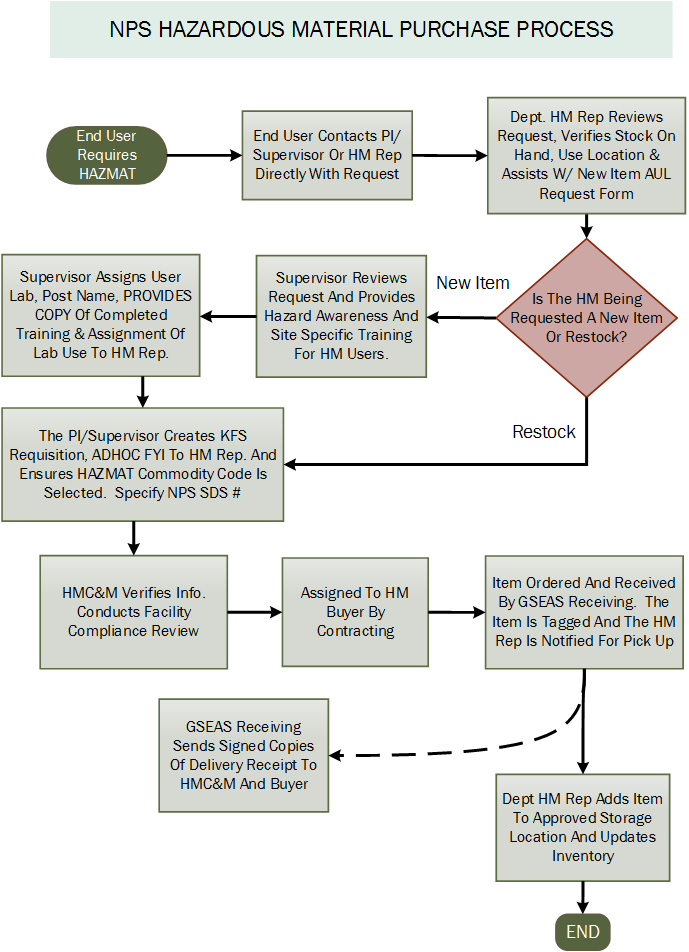CHP Procurement and storage - Safety
Chemical Procurement, Distribution and Storage
Procurement
All chemicals must be ordered through NPS Purchasing Department and require the review and approval of the NPS HAZMAT coordinator. Data on the name of the chemical/mixture, building and room number, size and number of containers, etc., must be entered into the NPS inventory management system in use at the time of purchase. When purchasing chemicals, consideration should be given to purchasing the least hazardous chemical for the process and the smallest quantity necessary. Prior to initiating an order, local inventories will be checked to ensure that the chemical is not already on hand. Procurement will only be accomplished in accordance with procedures established by NPSINST 5090.1. No container should be accepted which is not in good condition and properly marked with chemical name and manufacturer's name. An SDS for each chemical will be on hand prior to receiving the chemical.Distribution
When chemicals are hand-carried, the chemical container should be placed in a secondary container. Elevators should be used for transport, if available. Special care should be taken when transporting compressed gas cylinders or dewars filled with cryogenic liquids (> 10 liters) on elevators. Breakage of and/or leaks in these containers can lead to extremely hazardous situations if the elevator were to stall.
Storage
All chemicals must be stored by hazard class, in accordance with the NPS HAZMAT instruction. The amounts of chemicals stored in a laboratory should be as small as practicable. Disposal costs far outweigh the savings of buying in quantity, and a six-month supply should be the maximum. Hazardous material should not be stockpiled. Avoid exposure to heat and sunlight, and avoid storage on open bench tops and other areas subject to bumping. Inventories of on-hand inventories will be maintained current at all times. Storage areas will have sufficient ventilation to prevent accumulation of fumes. Storage of HAZMAT will be in secure facilities. Incompatible materials shall be segregated, as violent reactions may occur when the following hazard classes are mixed together:
- Corrosives + Flammables = Explosion/Fire
- Corrosives + Poisons = Poison Gas
- Flammables + Oxidizers = Explosion/Fire
- Acids + Bases = Corrosive Fumes/Heat
Please consult the Master Compatibility Matrix for a full listing of what chemicals may safely be stored together.
Chemical Hygiene Plan
- Introduction
- Definitions
- Responsibilities
- Lab Facilities
- Control Measures
- Lab Specific CHP
- Chemical Safety Information
- Employee Exposure Assessment
- Medical Surveillance
- HAZMAT Representatives
- Laboratory Audits
- Chemical Procurement, Distribution, & Storage
- Spills & Accidents
- HAZWASTE Disposal
- Resources




